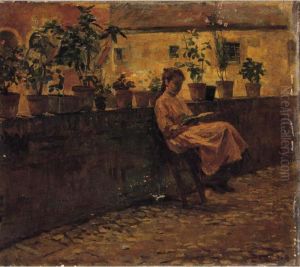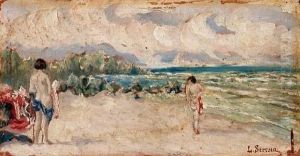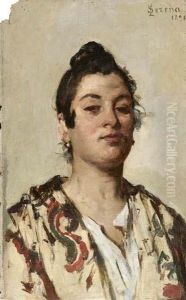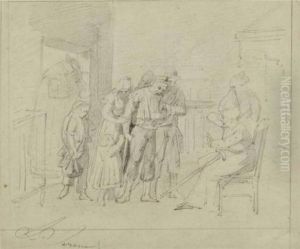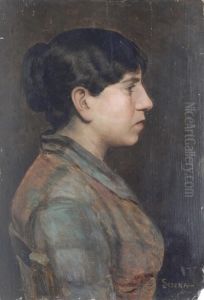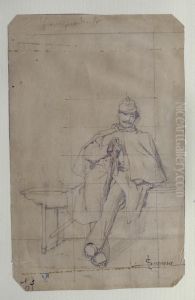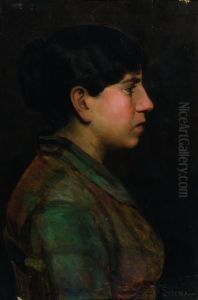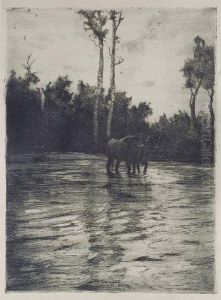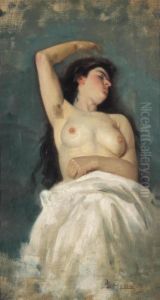Luigi Serena Paintings
Luigi Serena was an Italian painter known for his landscapes, genre scenes, and historical paintings that captured the essence of 19th-century Italy, particularly the Veneto region. Born on May 20, 1855, in Venice, Serena's artistic inclinations were evident from an early age. He received his initial training in art at the Accademia di Belle Arti in Venice, where he studied under the guidance of notable painters such as Pompeo Marino Molmenti and Napoleone Nani. His education there provided him with a solid foundation in the classical techniques and traditions of Italian painting, which he would later infuse with his own personal style.
Throughout his career, Serena exhibited a keen interest in capturing the daily life and environment of his homeland. He was particularly fascinated by the Venetian lagoon and the bustling life of its inhabitants. His works often depicted scenes of fishermen, marketplaces, and quiet, reflective moments in the Italian countryside. Serena's paintings were characterized by their vibrant colors, skillful use of light, and the ability to convey the atmosphere of a scene, whether it was the warmth of a sunny day or the tranquility of a moonlit night.
In addition to his genre scenes, Serena also delved into historical painting, creating works that depicted significant events from Italian history. These paintings were well-received for their dramatic composition and historical accuracy. Serena's dedication to his craft led to recognition beyond Venice, and his works were exhibited in various cities across Italy and Europe, earning him a reputation as a respected artist of his time.
Luigi Serena remained active in the Venetian art scene throughout his life. He was not only a painter but also an educator, sharing his knowledge and passion for art with a new generation of artists. He passed away on August 15, 1911, leaving behind a rich legacy of artwork that continues to be appreciated for its depiction of 19th-century Venetian life and culture. Today, Serena's paintings can be found in various art collections, museums, and galleries, where they serve as a testament to his skill and his love for the Venetian landscape and its people.
